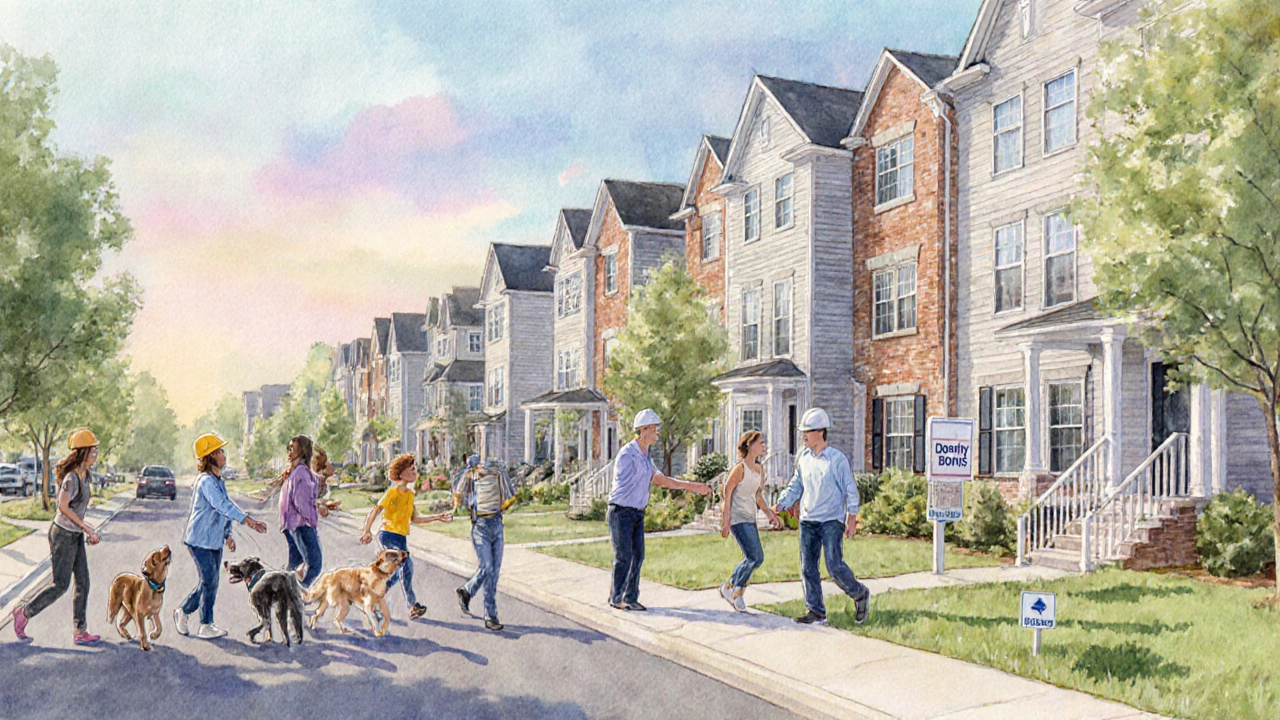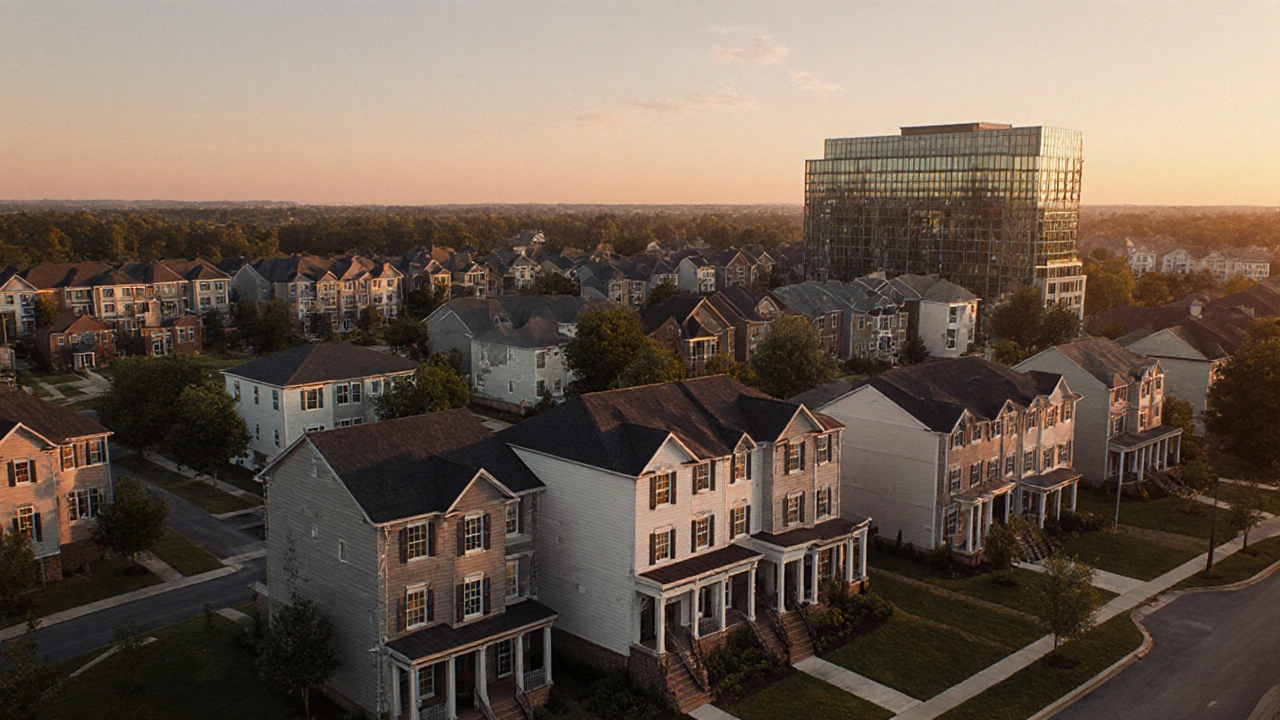Fairfax County Affordable Housing Calculator
Results Summary
Enter your details and click "Calculate Affordable Housing Requirements" to see the breakdown.
Quick Summary
- The Fairfax County Affordable Housing Ordinance (AHO) mandates a % of new homes be affordable or contributions to a housing trust fund.
- Developers can choose between on‑site affordable units, off‑site construction, or paying an in‑lieu fee.
- Low‑ and moderate‑income households gain access to below‑market rent or purchase options.
- Compliance is overseen by the Fairfax County Board of Supervisors through the Planning Department.
- Violations can trigger fines, stop‑work orders, and costly legal disputes.
What Is the Fairfax County Affordable Housing Ordinance?
When discussing local housing policy, Fairfax County Affordable Housing Ordinance is a set of inclusionary zoning rules adopted in 2021 that requires most new residential projects to provide a share of affordable units or contribute to a county‑wide housing trust fund. The ordinance aims to close the gap between rising market prices and the ability of low‑ and moderate‑income families to find decent homes within the county.
Named after the broader Affordable Housing movement, the rule is part of Virginia’s statewide push for more inclusive communities.
Core Provisions You Need to Know
The ordinance outlines three compliance paths, often called the "triple‑option" framework:
- On‑Site Affordable Units: Developers set aside a minimum of 10% of total units (or 15% in high‑density zones) as affordable rent‑geared or purchase‑geared homes.
- Off‑Site Construction: If on‑site affordability isn’t feasible, developers can build affordable units on another parcel within the same zoning district.
- In‑Lieu Fee: Paying a calculated fee into the Housing Trust Fund allows the county to fund affordable housing elsewhere.
Each option is subject to a strict timeline-usually 24months from project permitting-to ensure the promise translates into actual housing.

Who Qualifies for the Affordable Units?
Eligibility is pegged to Area Median Income (AMI) figures released annually by the Department of Housing and Urban Development (HUD). In Fairfax County for 2025, the AMI stands at $139,000 for a family of four. The ordinance caps rent or purchase price at 80% of AMI for:
- Very Low‑Income (VLMI) - up to 50% of AMI
- Low‑Income (LMI) - up to 80% of AMI
Applicants must submit income verification and sign a lease or purchase agreement that locks the affordability terms for at least 30years.
Impact on Developers - Incentives and Trade‑offs
Many developers wonder whether the ordinance hurts profitability. The county softens the impact with several incentives:
- Density Bonuses: Projects that exceed the minimum affordable unit threshold can receive up to a 20% increase in allowable floor area.
- Expedited Permitting: Affordable‑compliant projects move faster through the Planning Department.
- Tax Credits: Certain state‑level Low‑Income Housing Tax Credits (LIHTC) can be stacked with the AHO requirements.
However, developers must factor the cost of constructing or subsidizing affordable units-often an additional $50,000-$80,000 per unit-into their financial models.
Benefits for Residents and the Community
For families earning below 80% of AMI, the ordinance opens doors to:
- Rent that’s 30%-40% lower than market rates.
- Home‑ownership pathways with reduced down‑payment requirements.
- Access to mixed‑income neighborhoods that promote economic mobility.
Communities also gain from lower segregation, higher property values over time, and a broader tax base as residents stabilize in the area.
Compliance Process - Step‑by‑Step
Both developers and residents must navigate a clear set of steps to stay on the right side of the law:
- Pre‑Application Review: Submit a preliminary plan to the Fairfax County Planning Department for feedback on affordable options.
- Choose a Compliance Path: Decide between on‑site, off‑site, or in‑lie fee based on site constraints and cost analysis.
- Submit Detailed Documentation: Provide architectural drawings, affordability calculations, and fee payment schedules.
- Obtain Permit: Once approved, the county issues a conditional use permit that includes affordability clauses.
- Construction & Monitoring: The county conducts quarterly site visits to verify progress and unit completion.
- Certification: After final inspection, the developer receives a Certificate of Compliance, allowing the sale or lease of the units.
Failure to meet any milestone can trigger a stop‑work order and a daily penalty of $1,000 per non‑compliant unit.

Comparing Fairfax AHO with Neighboring Counties
| Feature | Fairfax County | Prince William County | Arlington County |
|---|---|---|---|
| Minimum Affordable % | 10% (15% in high‑density zones) | 7% | 12% |
| In‑Lieu Fee Rate (per unit) | $45,000 | $30,000 | $55,000 |
| Density Bonus | Up to 20% | Up to 10% | Up to 25% |
| Eligibility Ceiling | 80% AMI | 85% AMI | 75% AMI |
| Enforcement Timeline | 24months | 30months | 18months |
The table shows that Fairfax balances a moderate affordable % with a robust bonus system, making it competitive for developers who want flexibility.
Common Questions (FAQ)
Frequently Asked Questions
What is the deadline for paying the in‑lie fee?
Fees must be paid within 12months of receiving the conditional use permit. Late payments accrue a 5% annual interest.
Can the affordable‑unit requirement be waived?
Waivers are rare and only granted if the project proves that providing affordable units would cause a net loss to overall housing supply, subject to a board vote.
How is the Housing Trust Fund managed?
The fund is overseen by the Fairfax County Housing Authority, which allocates money to pre‑approved affordable‑housing projects through a competitive application process.
Do renters have to stay in the unit for a certain period?
Affordably priced leases usually require a minimum 12‑month stay, after which tenants can renew under the same income‑based terms.
What happens if a developer fails to deliver the promised units?
The county can issue a stop‑work order, impose daily fines, and pursue legal action to recover costs. In extreme cases, the developer’s license may be suspended.
Next Steps for Residents and Developers
If you’re a resident seeking an affordable home, start by checking Fairfax County’s online Housing Opportunities Portal for available units and income thresholds.
Developers should schedule a pre‑application meeting with the Planning Department, run a cost‑benefit analysis of the three compliance paths, and explore the LIHTC program for additional financing.
Staying informed and acting early are the best ways to make the affordable housing ordinance work for you.
